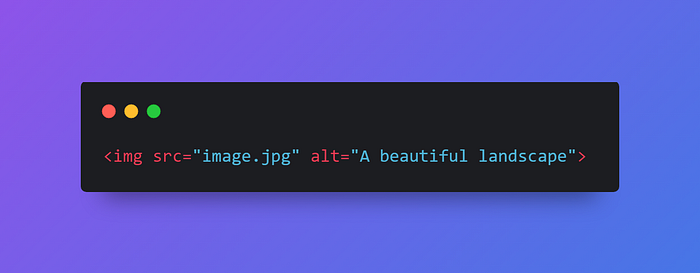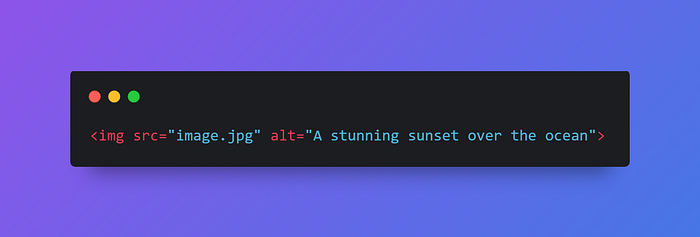Mastering HTML5 Images: A Comprehensive Guide with Examples

Introduction
Images are a fundamental part of web design, playing a crucial role in conveying information, enhancing aesthetics, and engaging users. HTML5, the latest version of Hypertext Markup Language, offers numerous features and attributes for embedding and displaying images on web pages. In this article, we will explore HTML5 images, their significance, and provide real-world examples to illustrate their use.
Understanding HTML5 Images
HTML5 provides several elements and attributes for working with images. The primary HTML5 element for embedding images is the <img> element, but there are also attributes and properties that allow you to control image behavior and presentation.
The <img> Element
The <img> element is used to embed images in a web page. It is a self-closing element and requires the src attribute, which specifies the image file's source URL.
Basic Image Example:

The alt Attribute
The alt attribute provides alternative text for the image. This text is displayed when the image cannot be loaded or when a screen reader is used. It is essential for accessibility and SEO.

Responsive Images
To make images responsive and adapt to different screen sizes, you can use the width and height attributes or CSS. It's also recommended to use the max-width: 100% CSS rule to ensure images scale down appropriately.

HTML5 Image Examples
Let’s explore practical examples of HTML5 images in real-world scenarios:
Displaying an Image

Responsive Image

Image with a Link

Image as a Background

Image Maps

Best Practices for HTML5 Images
To make the most of HTML5 images, consider the following best practices:
- Optimization: Ensure your images are appropriately optimized for the web to reduce load times without compromising quality.
- Alt Text: Always provide descriptive and meaningful
alttext for images to enhance accessibility and SEO. - Responsive Design: Use CSS or the
widthattribute to make images responsive and adapt to different screen sizes. - Consistency: Maintain a consistent style and formatting for images throughout your website.
- Image Maps: Use image maps when needed for creating clickable areas on images.
- Lazy Loading: Implement lazy loading for images to improve page loading speed.
Conclusion
HTML5 images are essential for creating engaging and visually appealing web pages. By understanding how to use the <img> element, attributes like alt, and responsive design techniques, you can create web content that is not only aesthetically pleasing but also accessible and user-friendly. Mastering HTML5 images is a fundamental skill for web developers aiming to create compelling and well-structured websites.
Thank you for reading this blog post!
I wish you all the best in your endeavors and hope you found this information helpful.
